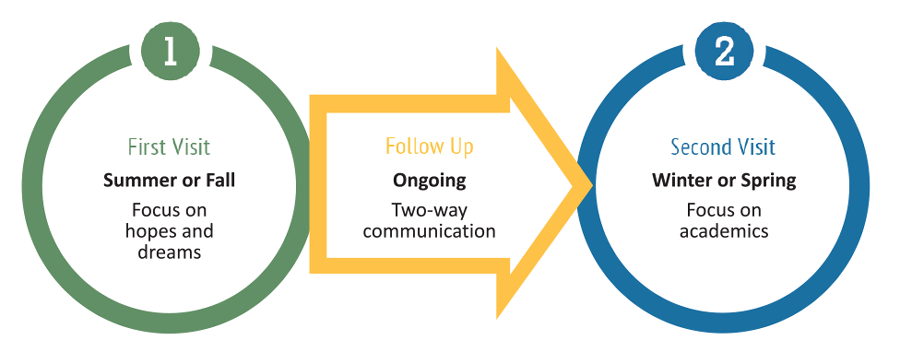The PTHV Model
The Parent Teacher Home Visits model was co-created by parents and educators using the community organizing principles of shared leadership and recognizing the inherent dignity in all people. The success of PTHV relies on training teachers and staff to develop meaningful relationships with families of their students, starting with voluntary home visits. These are short, 30- to 40-minute conversations, in which educators listen, ask questions, and make observations that they can take back to their classrooms to improve instruction for the learner. As a two-visit model, PTHV encourages the initial, ice-breaking visit to occur in the summer or early fall. This first visit focuses on sharing hopes and dreams. It is followed by ongoing communication throughout the year and a second visit that focuses on academics or any other relevant issue to the student or family.

Core Practices
Our Five Non-Negotiables

The Visits
PTHV is a two-visit model.



1st Home Visit – Summer or Fall
Educators focus on getting to know the student and the family. The educators and the family members share their experiences, their hopes and dreams for their child, and their expectations of each other. The conversation naturally leads to the educator and the family identifying how they will help the child with their goals.
Follow-up
Now that there is an ongoing relationship,
- Family members and educators may share resources and continue their communication.
- Teachers may use what they learned from the family to improve the child’s experience in the classroom, and enjoy a stronger relationship with the child.
- Families may find new or additional ways to be involved with the school.
2nd Home Visit – Winter or Spring
Educators meet with the family again, with the focus on how to support their child academically. Sometimes schools offer Academic Parent Teacher Teams or other ways parents can get up to speed on grade-level standards and specific strategies to help their child learn.
Support
PTHV is a nonprofit grassroots network that must raise its operating budget every year. Like the local home visit projects we help, our network is sustained by collaboration.
